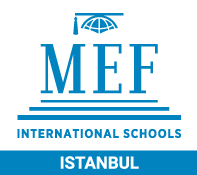MEF International Schools aims to educate individuals who can effectively use Information and Communication Technologies, so that they can become more producers of than consumers of technology. Therefore, we work with our students to gain different skills at each class level. The skills our students have when they graduate from MEF International Primary school can be summarized as follows:
Students will be able to:
- Use any kind of word processor, spreadsheet and presentation softwares for educational purposes.
- Make drawings using any picture / graphics program, and format ready-made pictures.
- Understand the concept of the internet, safely conduct research through the internet and be aware of the rules they should pay attention to when conducting research.
- Understand the framework of digital citizenship rules and apply them in their digital journey.
Some of the subjects covered through ICT at MEF IS.
Digital Citizenship
Technology at MEF International School requires that each student becomes a digital citizen, so students start learning about being a good digital citizen from grade 3 and continue to work on digital citizenship standards throughout the school year.
Each student is assigned an email account which allows collaboration with their peers and teachers in the MEF IS Community. They are not allowed to send or receive any emails outside the MEF domain. Providing them with email addresses is one way to help them practice positive digital citizenship.
Robotics
In this unit, students build their very first robot using basic LEGO blocks and learn how to program it.
Robotics strengthens students’ understanding of the eight science and engineering practices, including asking questions and solving problems, modeling, prototyping, investigating, analyzing and interpreting data, computational thinking, creating evidence based arguments, and obtaining, evaluating, and communicating information.
3D Designing & Printing
Design requires thoughtful planning, thinking and scientific knowledge about materials to create a useful product. In this unit, students learn the essentials of using a 3D modelling program and designing objects that they would like to print.
3D printing technology refers to a process of building 3D items from a digitally saved file. This is done using an additive process where an item is created through a successive layering of material until it is formed.
3D printing allows for authentic exploration of objects that are usually not available in a traditional classroom set up. This technique involves project-based learning where the students get engaged in the learning process. When students are involved, they can discover their talents and developmental resources they need for critical thinking.
Coding
We use Scratch as the tool for coding. Scratch is an educational block programming language developed by Massachusetts Institute of Technology (MIT) with over 8 million registered users and 10 million shared projects. Users program in Scratch by dragging blocks and attaching them to other blocks like a jigsaw puzzle. This method of programming is referred to as “block programming” which gives the foundations of understanding algorithms and writing programs.
Coding provides a proof of evidence for students in showing them how to realize what they dream of and helps them become a maker. Coding helps young people learn to think creatively, reason systematically and work collaboratively, which are essential skills for life in the 21st century.



